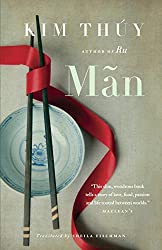
Rating: 7.4/10.
Novel of Norwegian literature, won the Nobel Prize in 1920; it tells the story of a homesteader named Isak in Northern Norway around 1850. The narrative begins with Isak settling in an untouched wilderness, far from any other settlement, where he starts building a home from scratch. Shortly after, his wife, Inger, arrives from a nearby village; they quickly marry and have several children. As the story progresses, their life becomes increasingly materially abundant, reflecting the innovations of modern life reaching their remote area. Inger goes to prison for several years after killing her newborn child, but upon her return to the homestead, she introduces many modern ideas that are not entirely compatible with Isak’s traditional and simpler views.
While the novel offers an intriguing perspective on life in rural Norway during the transition into modernity, I found myself losing interest halfway through. In some ways, its plot and setting are similar to Halldór Laxness’s “Independent People,” which is set in Iceland. However, this novel doesn’t depict nearly as much isolation and poverty as the Icelandic story. Whereas Bjartur’s tale in Laxness’s work is filled with material deprivation, hunger, and death, Isak’s life is materially better and shows gradual improvement with the arrival of new modern luxuries in the rural area.



